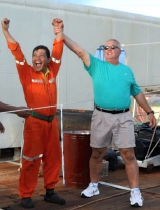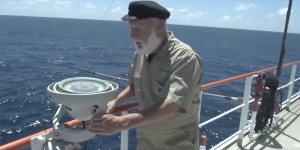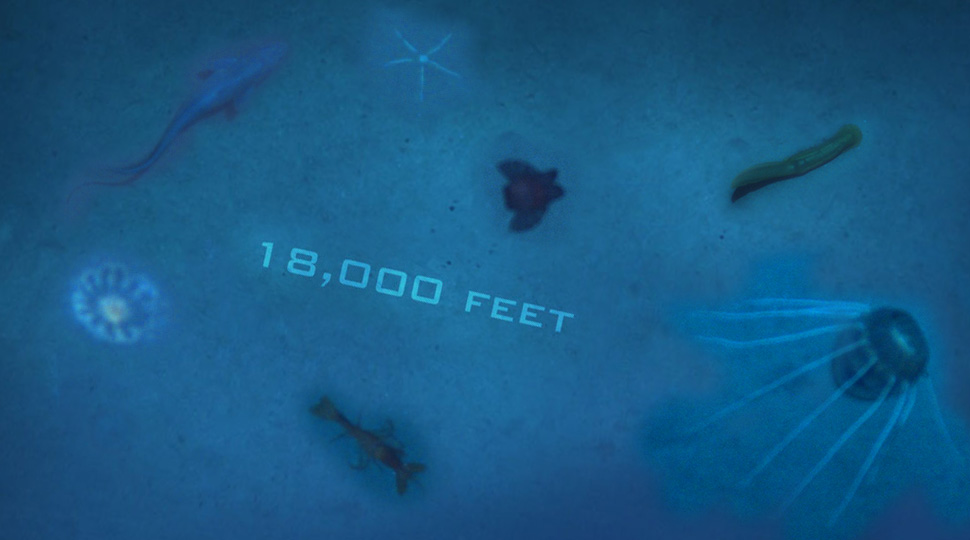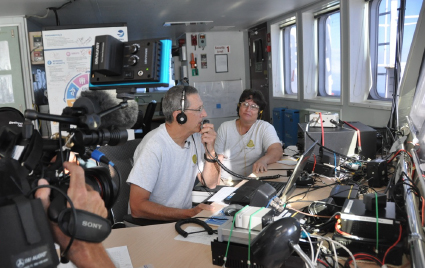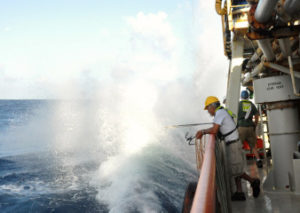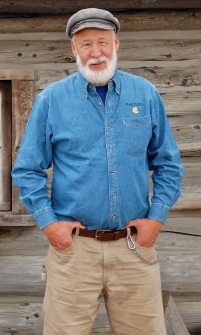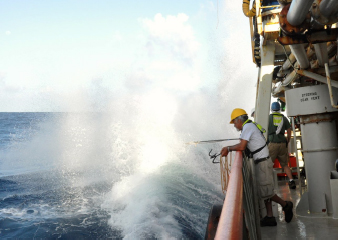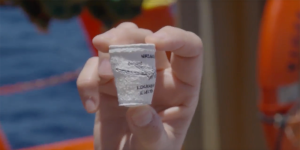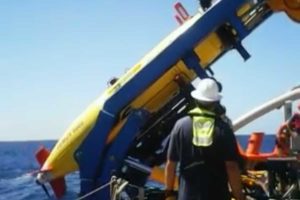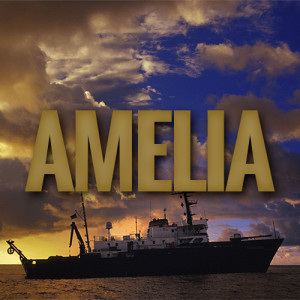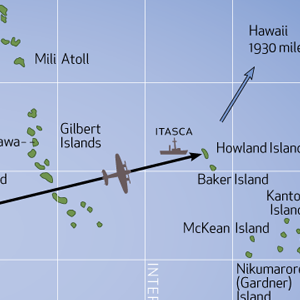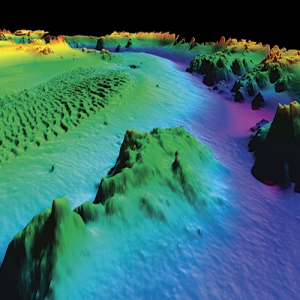Central Pacific Edition
Mapping the Earth
One Swath at a Time
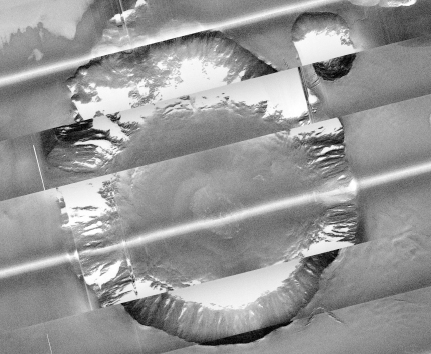 We have been scanning the seafloor for just over two weeks now and every day holds new discoveries. Though we like flat, boring terrain (all the better to see the Electra), we can’t help but be fascinated by the seep-sea world unfolding before us. With each recovery of REMUS, we eagerly scroll through the data to see what we have found.
We have been scanning the seafloor for just over two weeks now and every day holds new discoveries. Though we like flat, boring terrain (all the better to see the Electra), we can’t help but be fascinated by the seep-sea world unfolding before us. With each recovery of REMUS, we eagerly scroll through the data to see what we have found.
Over 90% of the seafloor around here is flat as Kansas, but it is dotted with volcanic ridges, landslides, calderas, and cinder cones that occasionally stick up hundreds of meters or more. There are even major seamounts just outside of our search area, the most dramatic rising over 3,000 meters (10,000 feet) from the sea floor (but the peak is still over 2,000 meters deep).
A particularly interesting feature was recently imaged, which we call Packard’s Cone in honor of our REMUS OPS team leader. The image mosaic here reveals a perfectly circular rise reminiscent of Meteor Crater in Arizona … but half again as big and certainly of volcanic (vice impact) origin. The profile is also quite different, as this feature is actually a cone rising from the bottom rather than a depression (see illustration on page 2).  The rim of the 1.8 km (1 nm) diameter feature rises 241 meters (almost 800 feet) from the seafloor, and its central cone is 389 meters (nearly 1,300 feet) high. As impressive as it is, we have imaged other much larger features this week including a seamount 16 km (8.5 nm) in diameter and 900 meters (3,000 feet) high.
The rim of the 1.8 km (1 nm) diameter feature rises 241 meters (almost 800 feet) from the seafloor, and its central cone is 389 meters (nearly 1,300 feet) high. As impressive as it is, we have imaged other much larger features this week including a seamount 16 km (8.5 nm) in diameter and 900 meters (3,000 feet) high.
None of the terrain we are mapping has been seen by humans before, so we give them our own names … Mt. Vinson, Dann’s Depression, etc. Technically, we can submit name suggestions to the cognizant government agency, which can choose to officially sanction them on future maps. However, they don’t like to name things after living people, so no one is volunteering to have an undersea mountain named after them any time soon.
Expedition Update
Amazingly, three vessels are on their way to our very remote location. S/V Sauvage will be rendezvousing with us around Wednesday to take Alan back to shore from where he can fly to to an engagement with fellow stratospheric explorer Joe Kittinger in Lancaster, PA. We’ll be saying farewell to a shipmate, but hope to bring him good news when we return. The next day we expect to see NOAA’s R/V Okeanos, out here exploring the Remote Pacific Islands Marine Sanctuaries. We may have an opportunity to visit them at sea. S/V Machias got underway from Honolulu yesterday bringing us a re-supply of transponder floats (and possibly some chocolate)! We’ll see her in about a week.



